Review of Ship Collision Avoidance Guidance Algorithms Using Remote Sensing and Game Control
Abstract
1. Introduction
2. The Game Control Process Model
2.1. The Condition of the Control Process
2.2. State and Control Limitations
2.3. Sets of Allowable Ship Tactics
3. Multi-Criteria Game Control Algorithms
3.1. Algorithm ANCPGC of Non-Cooperative Positional Game Control
3.2. Algorithm ACPGC of Cooperative Positional Game Control
3.3. Algorithm ANGPC of Non-Game Positional Control
3.4. Algorithm ANCRGC of Non-Cooperative Risk Game Control
3.5. Algorithm ACRGC of Cooperative Risk Game Control
3.6. Algorithm ANGRC of Non-Game Risk Control
4. Computer Simulation of Control Algorithms
5. Discussion
6. Conclusions
Funding
Institutional Review Board Statement
Informed Consent Statement
Data Availability Statement
Conflicts of Interest
Appendix A
| Algorithm A1. Calculating optimal maneuver. |
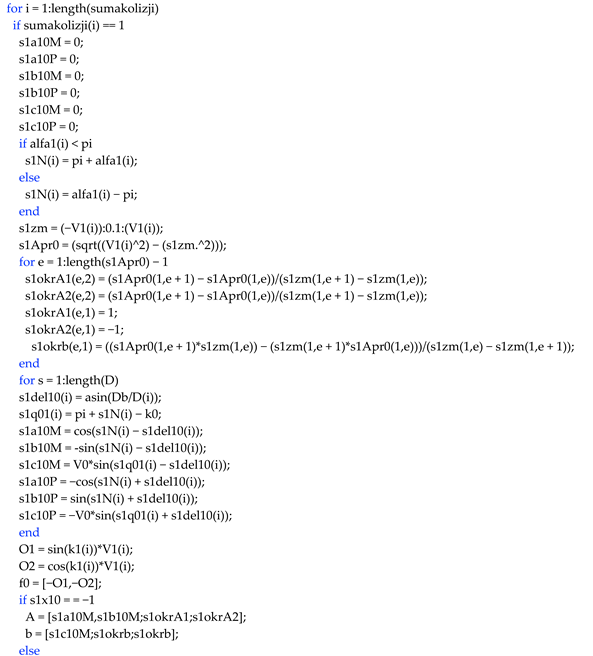 |
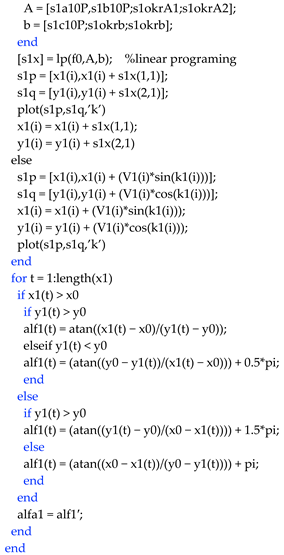 |
Appendix B
| Algorithm A2. COLREGs rules. |
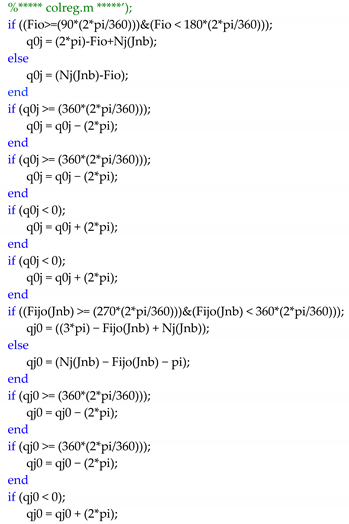 |
 |
 |
 |
 |
References
- Lisowski, J. The dynamic game models of safe navigation. TRANSNAV Int. J. Mar. Nav. Safety Sea Transp. 2007, 1, 11–18. [Google Scholar]
- Lisowski, J. The optimal and safe ship trajectories for different forms of neural state constraints. Mechatr. Syst. Mech. Mater. 2012, 180, 64–69. [Google Scholar] [CrossRef]
- Lisowski, J. Comparison of dynamic games in application to safe ship control. Pol. Marit. Res. 2014, 21, 3–12. [Google Scholar] [CrossRef]
- Li, J.; Zhang, G.; Liu, C.; Zhang, W. COLREGs-constrained adaptive fuzzy event-triggered control for underactuated surface vessels with the actuator failures. IEEE Trans. Fuzzy Syst. 2020, 29, 3822–3832. [Google Scholar] [CrossRef]
- Zhang, G.; Li, J.; Liu, C.; Zhang, W. A robust fuzzy speed regulator for unmanned sailboat robot via the composite ILOS guidance. Nonlinear 2022, 8, 1–16. [Google Scholar] [CrossRef]
- Śmierzchalski, R.; Witkowska, A. Advanced ship control methods. In Automatic Control, Robotics, and Information Processing; Kulczycki, P., Korbicz, J., Kacprzyk, J., Eds.; Springer Series on Studies in Systems; Decision and Control: Berlin/Heidelberg, Germany, 2021; Volume 296, pp. 617–643. [Google Scholar] [CrossRef]
- Szlapczynski, R.; Szlapczynska, J. Review of ship safety domains: Models and applications. Ocean. Eng. 2017, 145, 277–289. [Google Scholar] [CrossRef]
- Tomera, M.; Alfuth, L. Waypoint path controller for ships. TRANSNAV Int. J. Mar. Nav. Safety Sea Transp. 2020, 14, 375–383. [Google Scholar] [CrossRef]
- Lebkowski, A. Design of an autonomous transport system for coastal areas. TRANSNAV Int. J. Mar. Nav. Safety Sea Transp. 2018, 12, 117–124. [Google Scholar] [CrossRef]
- Gao, Q.; Song, L.; Yao, J. RANS prediction of wave-induced ship motions and steady wave forces and moments in regular waves. J. Mar. Sci. Eng. 2021, 9, 1459. [Google Scholar] [CrossRef]
- Borkowski, P. Numerical modeling of wave disturbances in the process of ship movement control. Algorithms 2018, 11, 130. [Google Scholar] [CrossRef]
- Hinostroza, M.A.; Xu, H.; Soares, C.G. Cooperative operation of autonomous surface vehicles for maintaining formation in complex marine environment. Ocean Eng. 2019, 183, 132–154. [Google Scholar] [CrossRef]
- Sun, Z.; Sun, H.; Li, P.; Zou, J. Self-organizing cooperative pursuit strategy for multi-USV with dynamic obstacle ships. J. Mar. Sci. Eng. 2022, 10, 562. [Google Scholar] [CrossRef]
- Engwerda, J. Stabilization of an uncertain simple fishery management game. Fish. Res. 2018, 203, 63–73. [Google Scholar] [CrossRef]
- Singh, S.K.; Reddy, P.V. Dynamic network analysis of a target defense differential game with limited observations. arXiv 2021, arXiv:2101.05592. [Google Scholar]
- Mu, C.; Wang, K.; Ni, Z.; Sun, C. Cooperative differential game-based optimal control and its application to power systems. IEEE Trans. Ind. Inform. 2020, 16, 5169–5179. [Google Scholar] [CrossRef]
- Hagen, I.B.; Kufoalor, K.M.; Brekke, E.F.; Johansen, T.A. MPC-based collision avoidance strategy for existing marine vessel guidance systems. In Proceedings of the IEEE International Conference on Robotics and Automation, Brisbane, Australia, 21–25 May 2018. [Google Scholar] [CrossRef]
- Huang, Y.; Zhang, T.; Zhu, Q. The inverse problem of linear-quadratic differential games: When is a control strategies profile Nash? arXiv 2022, arXiv:2207.05303. [Google Scholar]
- Braquet, M.; Bakolas, E. Vector field-based collision avoidance for moving obstacles with time-varying elliptical shape. arXiv 2022, arXiv:2207.01747. [Google Scholar]
- Chen, Y.; Georgiou, T.T.; Pavon, M. Covariance steering in zero-sum linear-quadratic two-player differential games. arXiv 2019, arXiv:1909.05468. [Google Scholar]
- Gronbaek, L.; Lindroos, M.; Munro, G.; Pintassilgo, P. Cooperative games in fisheries with more than two players. In Game Theory and Fisheries Management; Springer: Cham, Switzerland, 2020; pp. 81–105. ISBN 978-3-030-40112-2. [Google Scholar]
- Gromova, E.V.; Petrosyan, L.A. On an approach to constructing a characteristic function in cooperative differential games. Project: Cooperative differential games with applications to ecological management. Autom. Remote Control. 2017, 78, 1680–1692. [Google Scholar] [CrossRef]
- Basar, T.; Olsder, G.J. Dynamic Non-Cooperative Game Theory; Siam: Philadelphia, PA, USA, 2013; ISBN 978-0-898-714-29-6. [Google Scholar]
- Lisowski, J. Synthesis of a path-planning algorithm for autonomous robots moving in a game environment during collision avoidance. Electronics 2021, 10, 675. [Google Scholar] [CrossRef]
- Lisowski, J. Multi-criteria multi-stage game optimization. J. Autom. Electron. Electr. Eng. 2022, 4, 37–42. [Google Scholar] [CrossRef]
- Lisowski, J. Game control methods comparison when avoiding collisions with multiple objects using radar remote sensing. Remote Sens. 2020, 12, 1573. [Google Scholar] [CrossRef]
- Ehrgott, M.; Gandibleux, X. Multiple Criteria Optimization: State of the Art Annotated Bibliographic Surveys; Kluwer Academic Press: New York, NY, USA, 2002. [Google Scholar]
- Engwerda, J.C. LQ Dynamic Optimization and Differential Games; John Wiley & Sons: New York, NY, USA, 2005; ISBN 978-0-470-01524-7. [Google Scholar]
- Falcone, M.; Ferretti, R. Semi-Lagrangian Approximation Schemes for Linear and Hamilton-Jacobi Equations; Sian: Philadelphia, PA, USA, 2014. [Google Scholar]
- Guenin, B.; Konemann, J.; Tuncel, L. A Gentle Introduction to Optimization; Cambridge University Press: Cambridge, UK, 2014. [Google Scholar]
- Hermes, H.; Isaacs, R. Differential games. Math. Comput. 1965, 19, 700. [Google Scholar] [CrossRef]
- Li, Y.; Vorobeychik, Y. Path planning games. Multiagent Syst. arXiv 2019, arXiv:1910.13880. [Google Scholar]
- Marler, R.T.; Arora, J.S. Survey of multi-objective optimization methods for engineering. Struct. Multidiscip. Optim. 2004, 26, 369–395. [Google Scholar] [CrossRef]
- Osborne, M.J. An Introduction to Game Theory; Oxford University Press: New York, NY, USA, 2004; ISBN 978-0-19-512895-6. [Google Scholar]
- Speyer, J.L.; Jacobson, D.H. Primer on Optimal Control Theory; Siam: Toronto, ON, Canada, 2010; ISBN 978-0-898716-94-8. [Google Scholar]
- Spica, R.; Cristofalo, E.; Wang, Z.; Montijano, E.; Schwager, M. A real-time game theoretic planner for autonomous two-player drone racing. IEEE Trans. Robot. 2020, 36, 1389–1403. [Google Scholar] [CrossRef]
- Wells, D. Game and Mathematics; Cambridge University Press: London, UK, 2003; ISBN 978-1-78326-752-1. [Google Scholar]
- Yong, J. Optimization Theory—A Concise Introduction; World Scientific: New Jersey, NJ, USA, 2018; ISBN 978-981-3237-64-3. [Google Scholar]
- Lazarowska, A. Safe Trajectory Planning for Maritime Surface Ships; Springer Series on Naval Architecture, Marine Engineering; Shipbuilding and Shipping: Berlin/Heidelberg, Germany, 2022; Volume 13, pp. 1–185. [Google Scholar] [CrossRef]
- Isaacs, R. Differential Games; John Wiley & Sons: New York, NY, USA, 1965; ISBN 0-48640-682-2. [Google Scholar]
- Kim, I.Y.; de Weck, O.L. Adaptive weighted sum method for bi-objective optimization: Pareto front generation. Struct. Multidiscip. Opt. 2005, 29, 149–158. [Google Scholar] [CrossRef]
- Koksalan, M.; Wallenius, J.; Zionts, S. Early history of multiple criteria decision making. J. Multi-Criteria Decis. Anal. 2013, 20, 87–94. [Google Scholar] [CrossRef]
- Legriel, J. Multicriteria Optimization and Its Application to Multi-Processor Embedded Systems. Ph.D. Thesis, Grenoble University, Grenoble, France, 2011. [Google Scholar]
- Millington, I.; Funge, J. Artificial Intelligence for Games; CRC Press: Boca Raton, FL, USA, 2018. [Google Scholar]
- Nicotra, M.M.; Liao-McPherson, D.; Kolmanovsky, I.V. Embedding constrained model predictive control in a continuous-time dynamic feedback. IEEE Trans. Autom. Control 2019, 64, 1932–1946. [Google Scholar] [CrossRef]
- Nisan, N.; Roughgarden, T.; Tardos, E.; Vazirani, V.V. Algorithmic Game Theory; Cambridge University Press: New York, NY, USA, 2007. [Google Scholar]
- Odu, G.O.; Charles-Owaba, O.E. Review of multi-criteria optimization methods—Theory and applications. IOSR J. Eng. 2013, 3, 1–14. [Google Scholar] [CrossRef]
- Hosseinzadeh, M.; Garone, E.; Schenato, L. A Distributed method for linear programming problems with box constraints and time-varying inequalities. IEEE Control. Syst. Lett. 2018, 3, 404–409. [Google Scholar] [CrossRef]
- Messac, A.; Mattson, C.A. Generating well-distributed sets of Pareto points for engineering design using physical programming. J. Optim. Eng. 2002, 3, 431–450. [Google Scholar] [CrossRef]
- Messac, A.; Sukam, C.P.; Melachrinoudis, E. Agregate objective functions and Pareto frontiers: Required relationships and practical implications. J. Optim. Eng. 2000, 1, 171–188. [Google Scholar] [CrossRef]
- Liu, Z.; Wu, Z.; Zheng, Z. A cooperative game approach for assessing the collision risk in multi-vessel encountering. Ocean Eng. 2019, 187, 106175. [Google Scholar] [CrossRef]
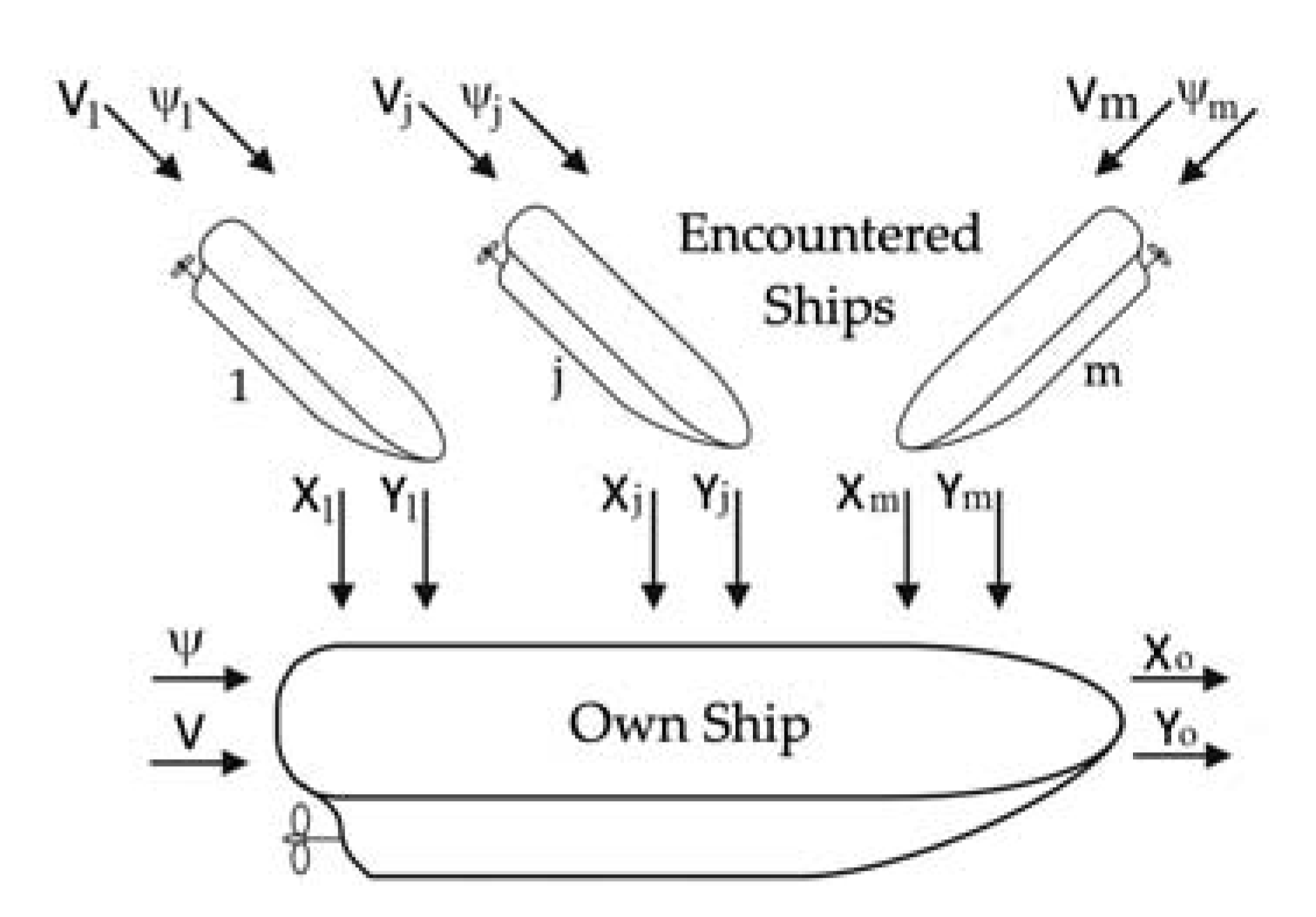
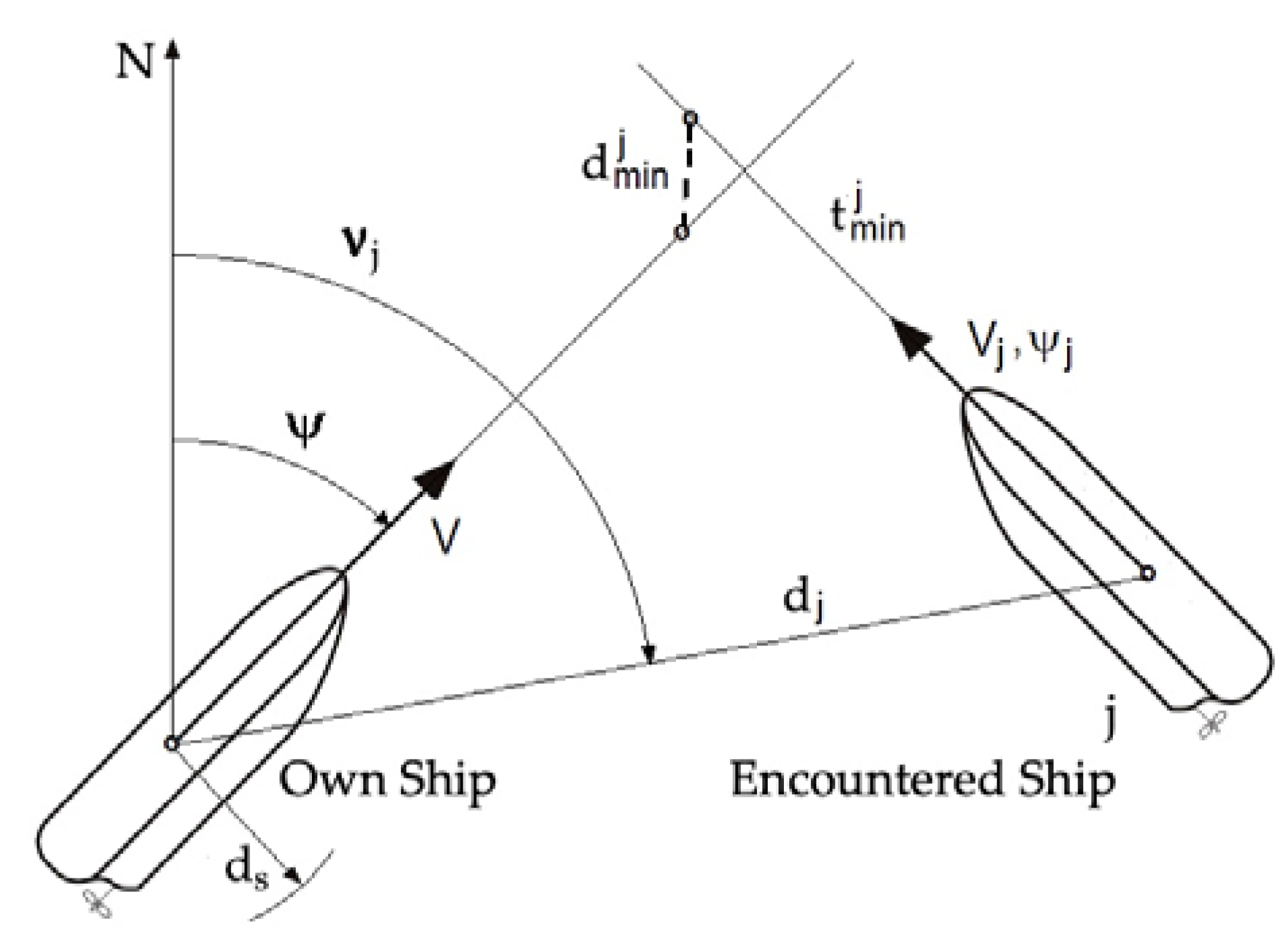
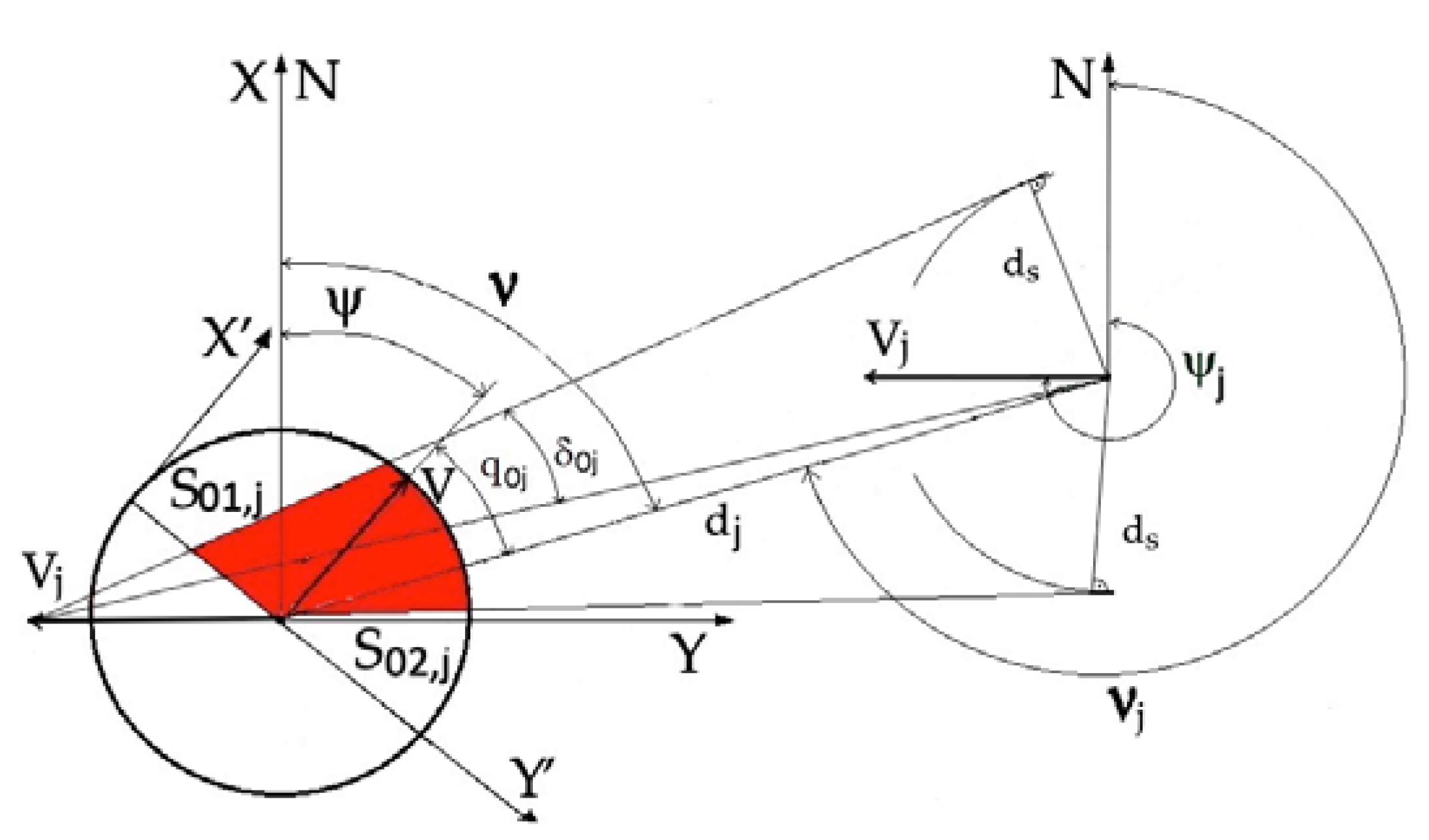

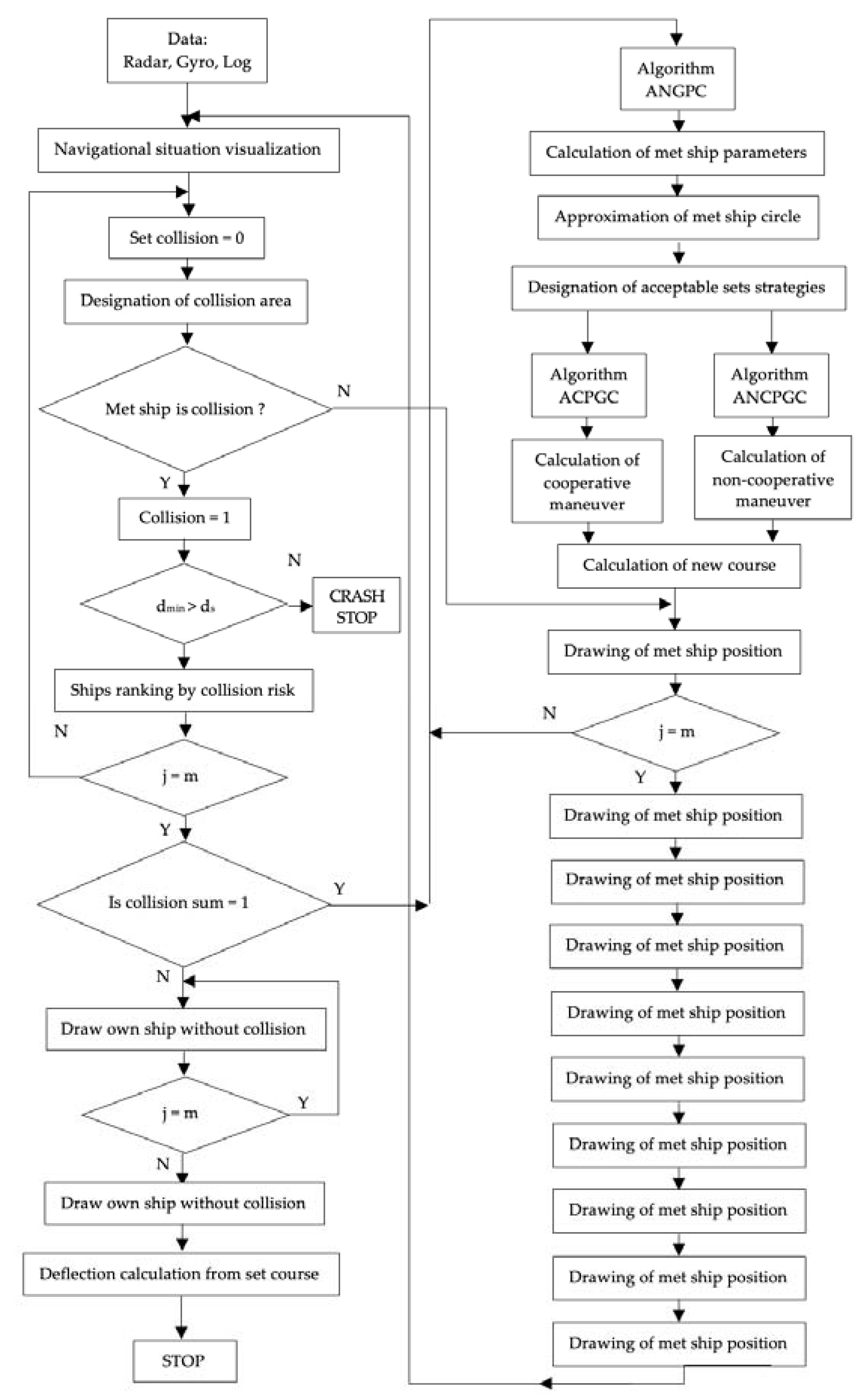
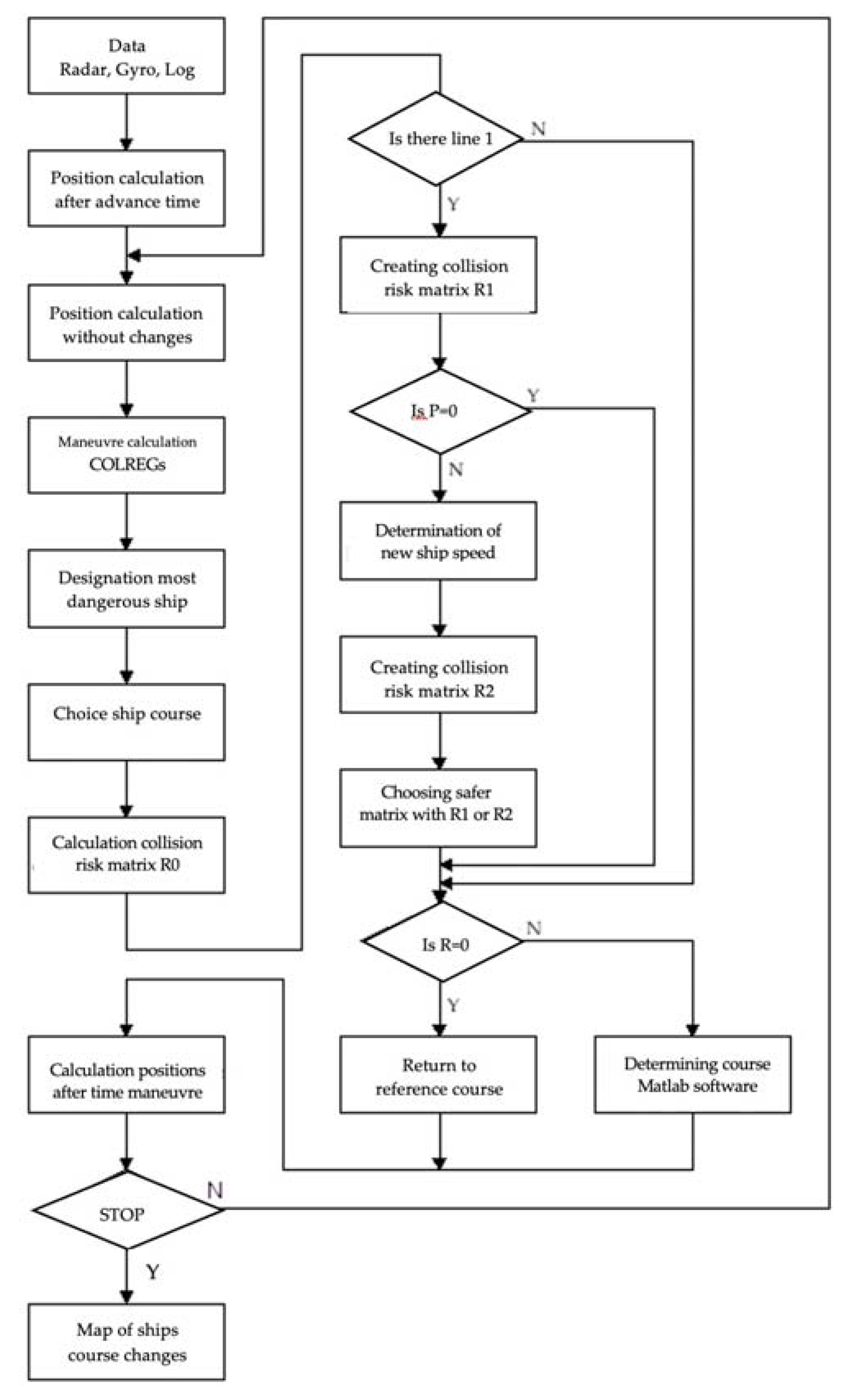
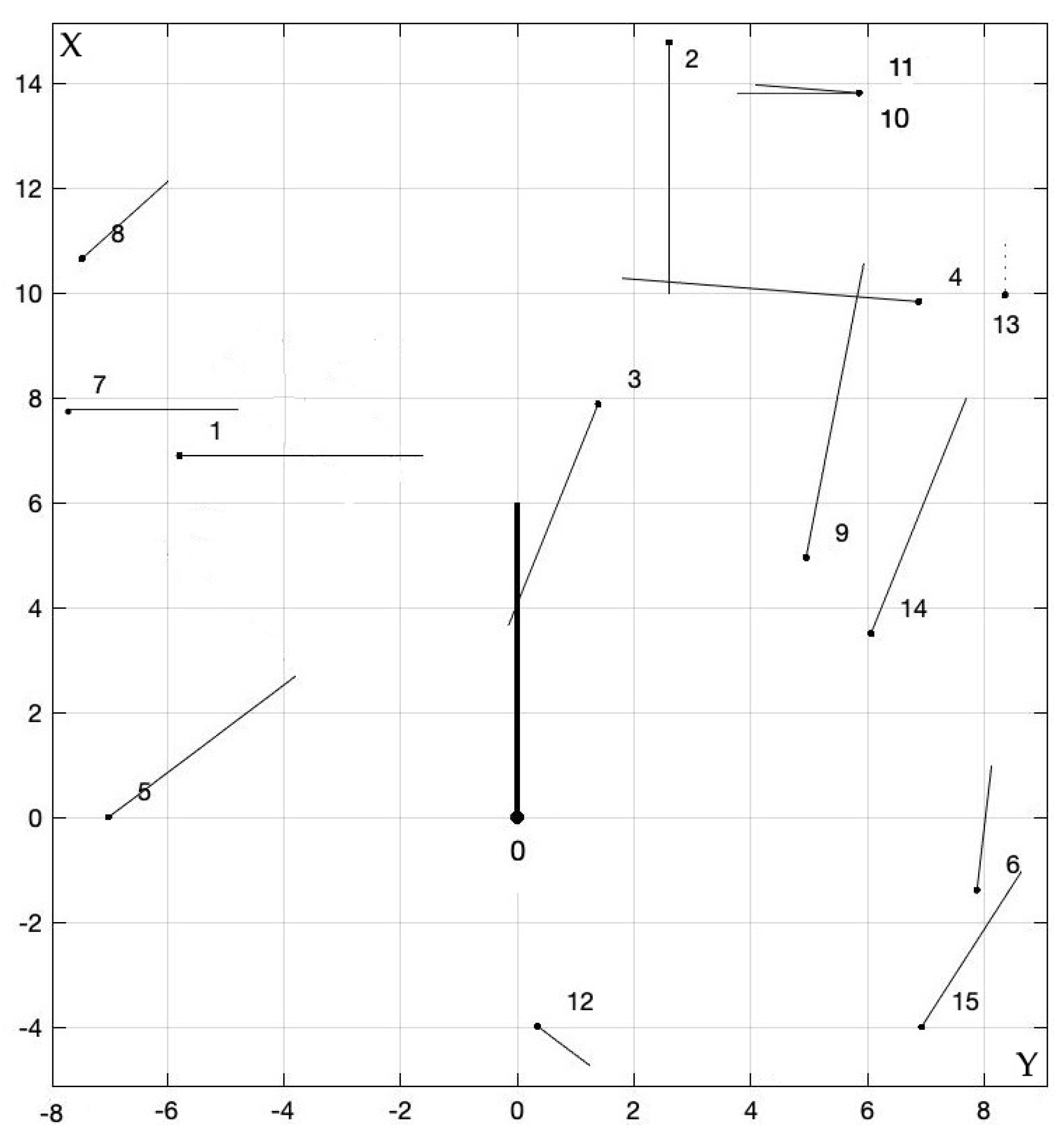
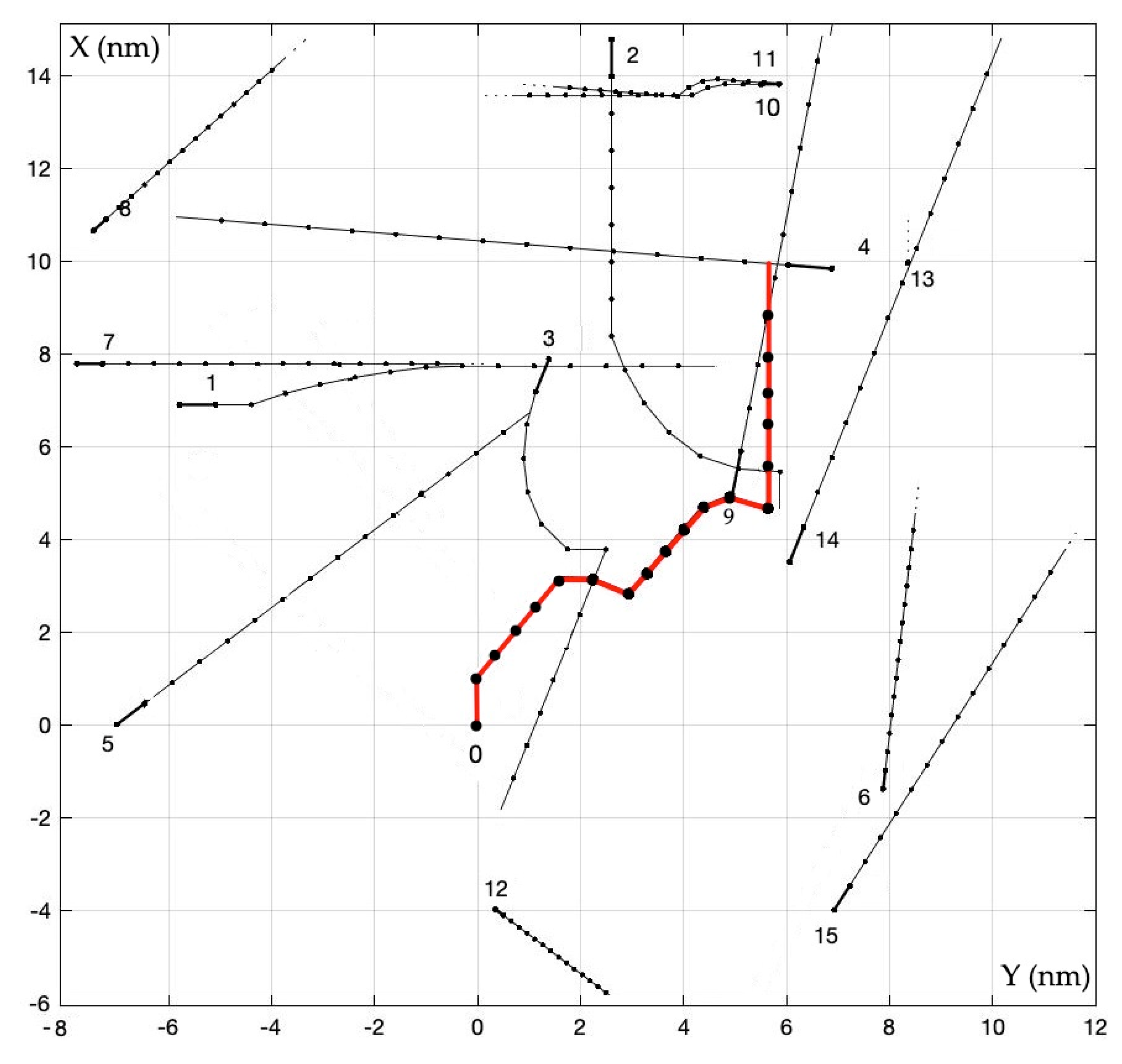
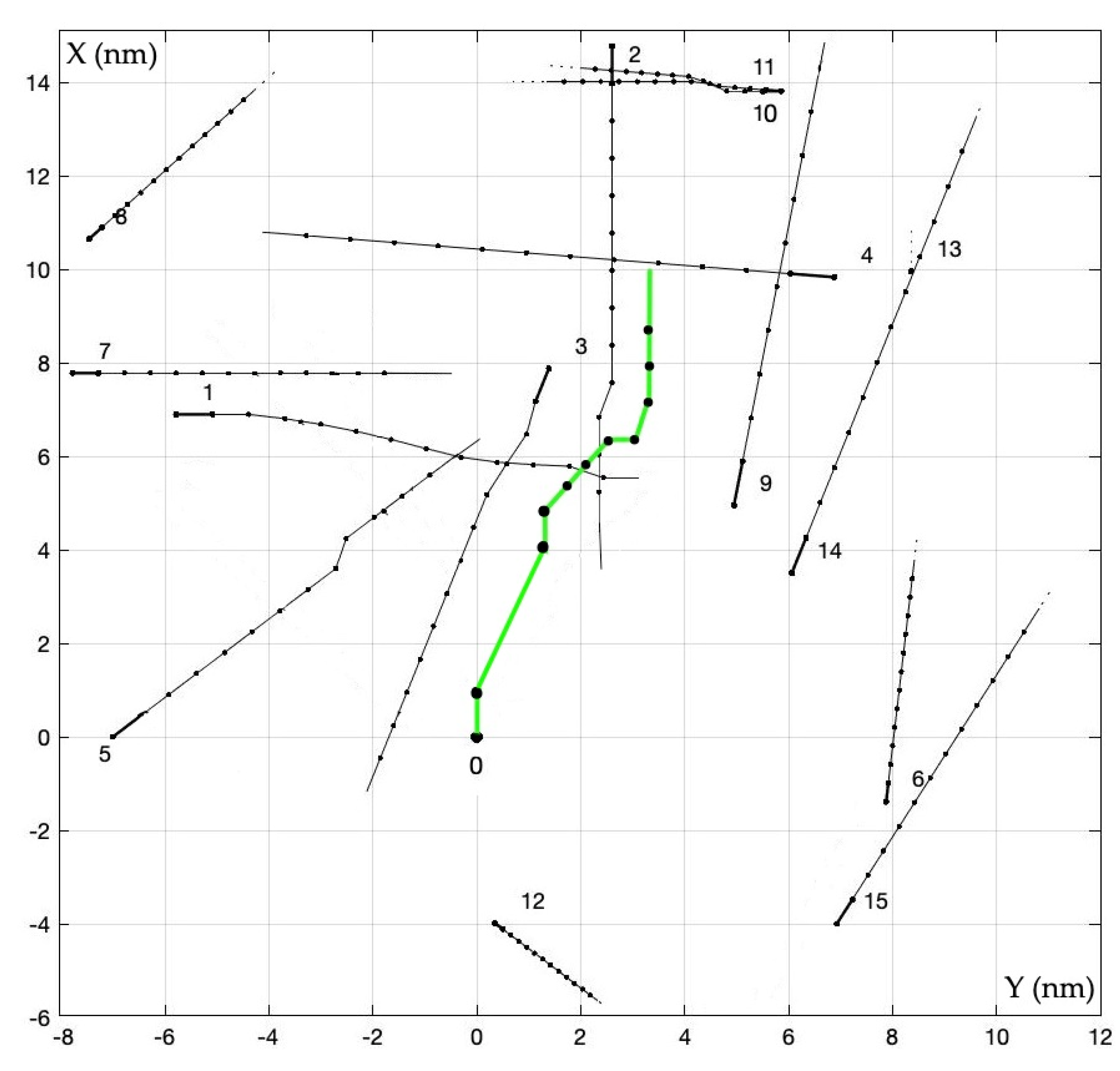
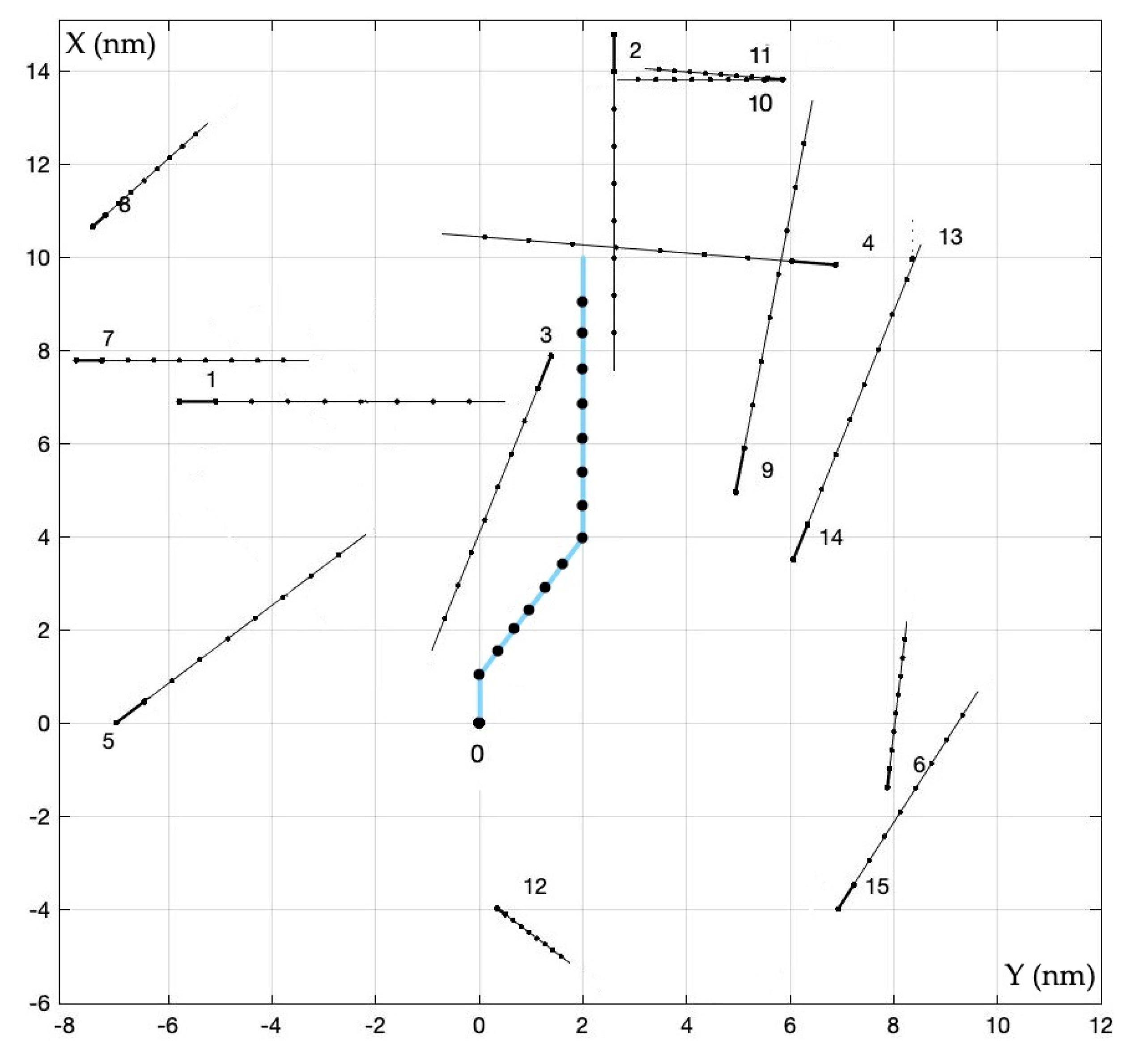
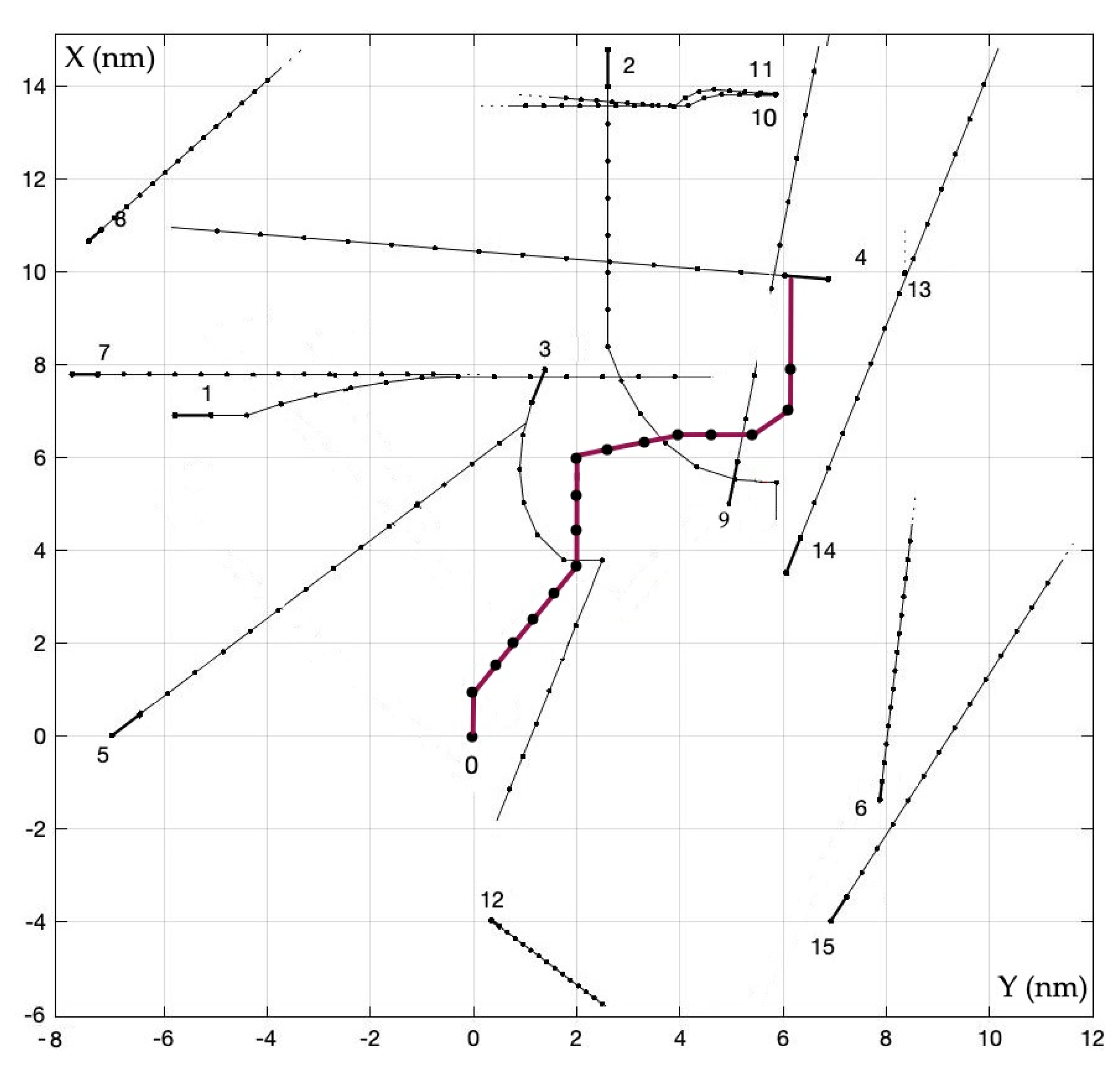
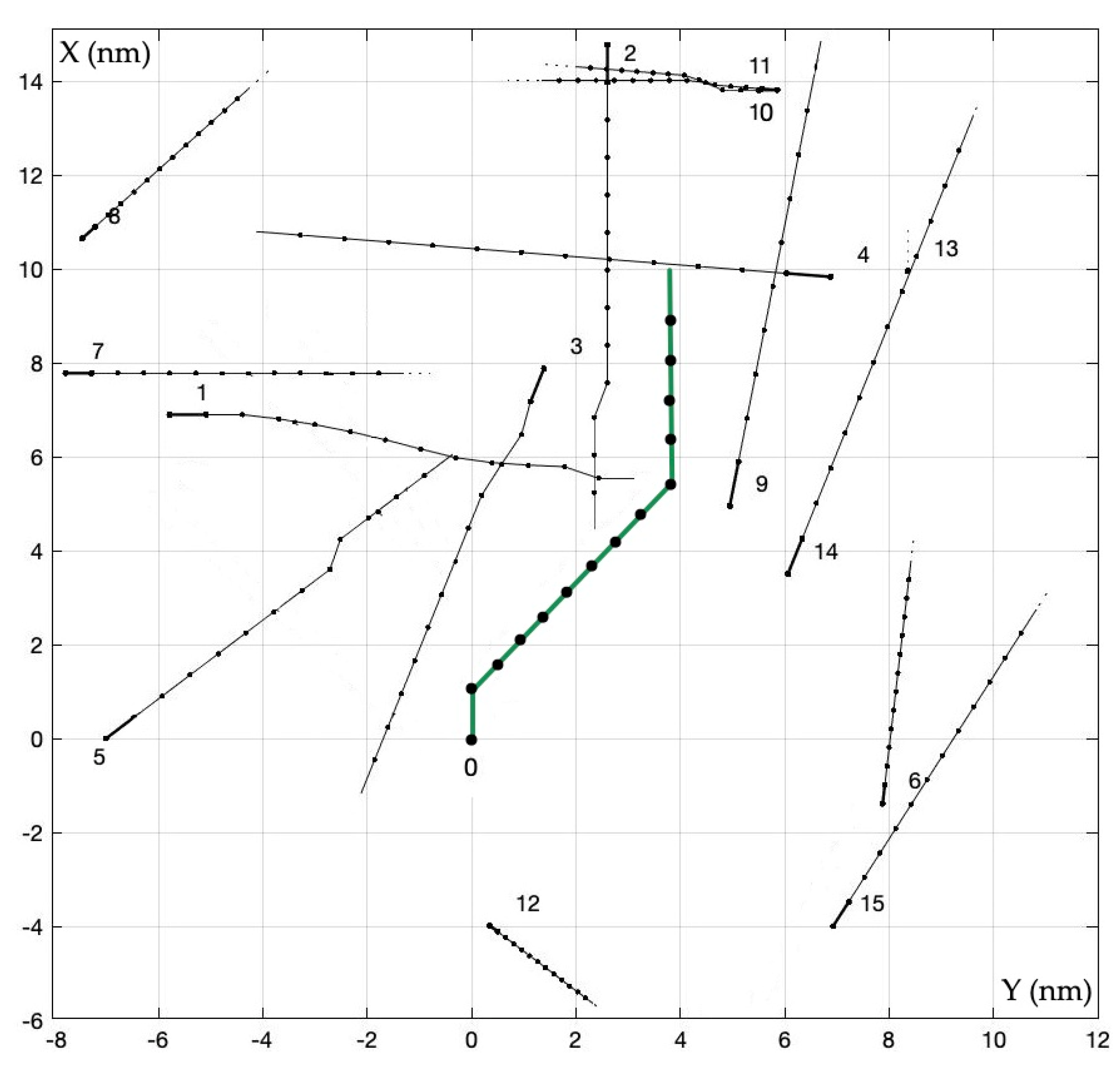
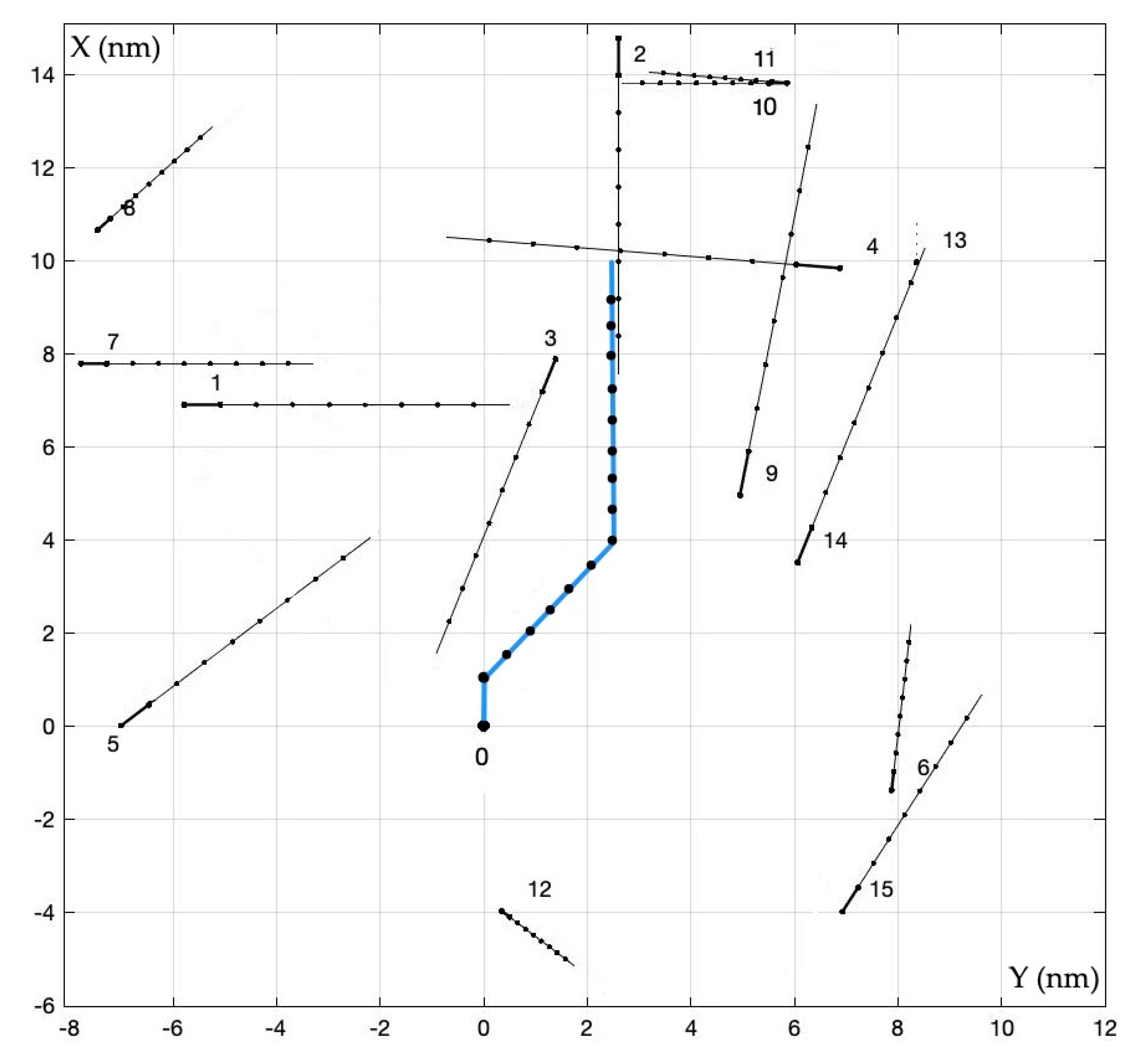
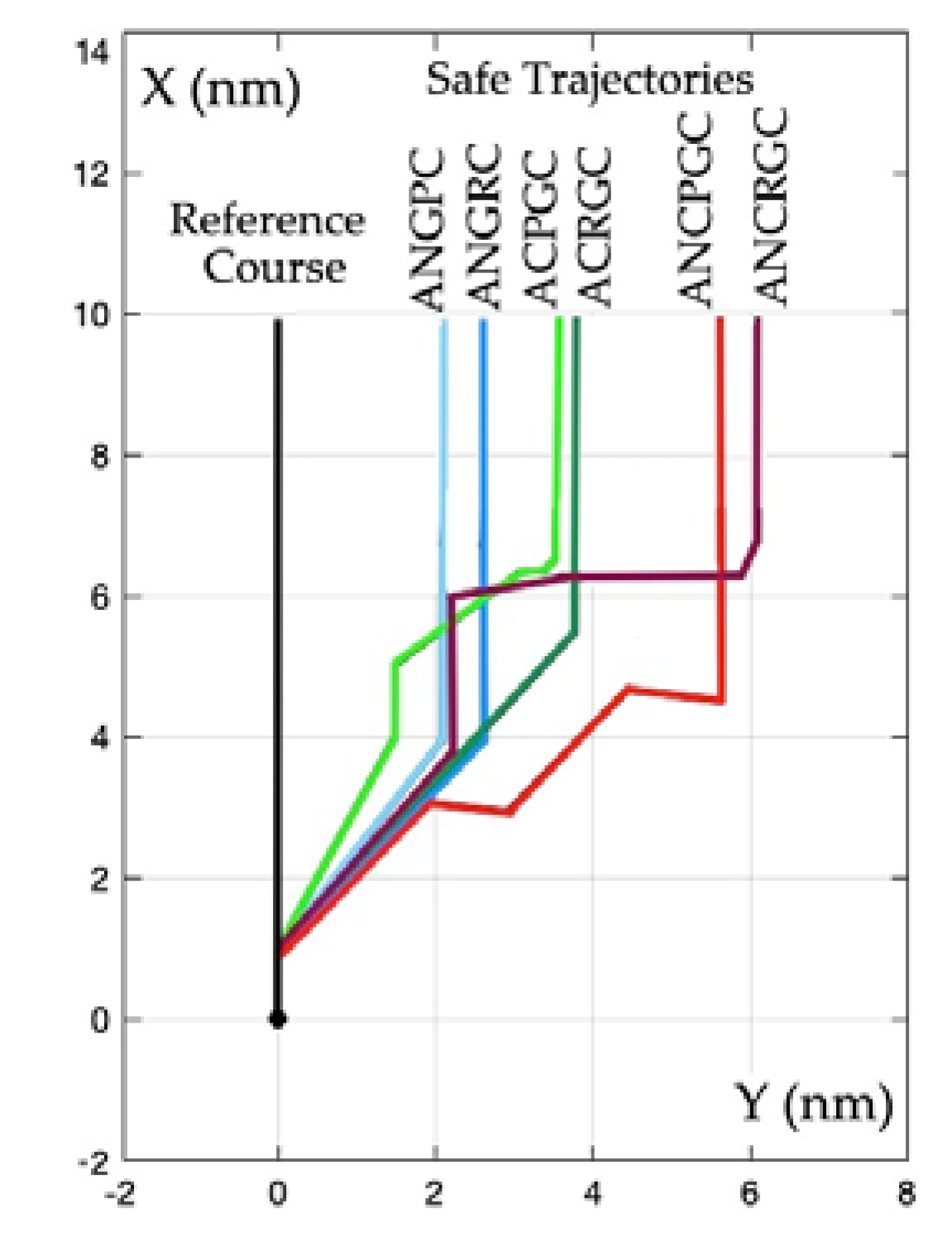
| Ship j | Distance dj (nm) | Bearing νj (o) | Speed Vj (kn) | Course Ψj (o) |
|---|---|---|---|---|
| 0 | - | - | 19 | 0 |
| 1 | 9.1 | 321 | 14 | 90 |
| 2 | 1.9 | 11 | 16 | 180 |
| 3 | 8.1 | 10 | 15 | 200 |
| 4 | 11.9 | 35 | 17 | 275 |
| 5 | 7.1 | 270 | 14 | 50 |
| 6 | 8.1 | 100 | 8 | 6 |
| 7 | 10.9 | 315 | 10 | 90 |
| 8 | 13.1 | 325 | 7 | 45 |
| 9 | 6.9 | 45 | 19 | 10 |
| 10 | 14.9 | 23 | 6 | 275 |
| 11 | 15.1 | 23 | 7 | 270 |
| 12 | 4.2 | 175 | 4 | 130 |
| 13 | 12.8 | 40 | 0 | 0 |
| 14 | 7.3 | 59 | 16 | 20 |
| 15 | 8.5 | 119 | 12 | 30 |
Publisher’s Note: MDPI stays neutral with regard to jurisdictional claims in published maps and institutional affiliations. |
© 2022 by the author. Licensee MDPI, Basel, Switzerland. This article is an open access article distributed under the terms and conditions of the Creative Commons Attribution (CC BY) license (https://creativecommons.org/licenses/by/4.0/).
Share and Cite
Lisowski, J. Review of Ship Collision Avoidance Guidance Algorithms Using Remote Sensing and Game Control. Remote Sens. 2022, 14, 4928. https://doi.org/10.3390/rs14194928
Lisowski J. Review of Ship Collision Avoidance Guidance Algorithms Using Remote Sensing and Game Control. Remote Sensing. 2022; 14(19):4928. https://doi.org/10.3390/rs14194928
Chicago/Turabian StyleLisowski, Józef. 2022. "Review of Ship Collision Avoidance Guidance Algorithms Using Remote Sensing and Game Control" Remote Sensing 14, no. 19: 4928. https://doi.org/10.3390/rs14194928
APA StyleLisowski, J. (2022). Review of Ship Collision Avoidance Guidance Algorithms Using Remote Sensing and Game Control. Remote Sensing, 14(19), 4928. https://doi.org/10.3390/rs14194928






